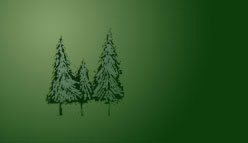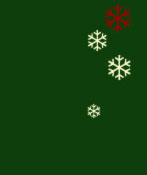|
Lab Safety
In an article written for Science Scope, Ken Roy, chairperson
for NSTA's Science safety Advisory Board, says that some chemicals still found in middle and high school inventories are considered
too hazardous to store and use.
- Ammonium dichromate (toxic byproducts)
- Benzene (carcinogen)
- Carbon tetrachloride
- Chloroform
- Concentrated inorganic/mineral acids such as hydrochloric acid, nitric acid, and sulfuric acid (corrosive, serious
burn and eye hazard)
- Copper sulfate (toxic)
- Diethyl ether (forms explosive peroxides)
- Dry ice (frostbite and blisters)
- Elemental mercury (highly toxic)
- Elemental potassium (forms explosive oxides)
- Formaldehyde (carcinogen)
- Hydrogen sulfide (toxic vapors)
- Iodine (respiratory irritant)
- Lead compounds such as lead chloride (one of more are potential carcinogens, toxic)
- Magnesium strips (burn hazard)
- Mercury salts such as mercuric sulfate (toxic)
- Methanol or methyl alcohol (toxic)
- Mineral talc (can cause asbestosis)
- Picric acid (explosive crystals)
- Potassium chlorate (can cause violent reactions)
- Silver cyanide (toxic)
- Sodium hydroxide (caustic)
- Vinyl chloride (carcinogen)
- White phosphorous (fire hazard)
Should you have any of these chemical in your classroom, please take caution in the use of these chemicals.
Appropriate personal protection equipment, facilities, and disposal are all required. Often simple substitutes can work just
as well as a chemical that presents a safety hazard. The article offers a list of chemicals that are considered safe.
The article can be found on pages 12 -13 of the Nov/Dec 2004 issue of Science Scope or downloaded at:
http://www.greeningschools.org/docs/safety1.pdf

A. Winter Ecology Field Trip Program Descriptions
GRADE 3
1. A Bug's Other Life
Summary: Students explore the ways that insects meet their needs
in order to make it through the winter. Search for bugs on the snow, in galls, under bark, and in other
habitable places.
Objective: Students will explain what happens to insects in the winter, where they go and how they survive. Content
Benchmarks Addressed: SCI.I.I.E.1,6; SCI.II.I.E.4; SCI.III.2.E.2-4; SCI.III.4.LE.2; MAT.III.1.E.1-2
2. For The Birds
Summary: Birds don't hibernate, so how do they cope with the cold? Some
birds migrate out of our area for winter, some migrate in, and some stay here year-round. Students will learn about a variety
of survival techniques birds use, and students will also search for signs of birds and their nests from seasons past.
Objective: Students will learn which birds are in our area during winter, what they are eating, how they stay warm and
well fed. Content Benchmarks Addressed: SCI.I.I.E.1,6; SCI.II.I.E.4; SCI.III.2.E.1-4; SCI.III.4.E.2;
SCI.III.5.E.2; MAT.III.1.E.1-2
GRADE 4
1. Best Insulator
Summary: Students will test the insulating qualities of different materials
in both wet and dry conditions. They will collect data and create a graph of their findings. Objective: Students will
make hypotheses, use thermometers to measure and collect data, and evaluate their results using a line graph. Content
Benchmarks Addressed: SCI.I.1.E.1-6; SCI.II.1.E.1,4; SCI.III.4.E.2; MAT.II.3.6; MAT.III.1.E.1-2
2. Think Small
Summary: Where do small mammals live in the winter? How do they
stay warm and what do they eat? Students will search for habitable places and collect data from these micro-sites, including
temperature, food availability and shelter. Objective: Students will identify the needs of mammals and determine how
their needs are met in winter. Content Benchmarks Addressed: SCI.I.1.E.1-6; SCI.II.1.E.1,4; SCI.III.2.E.4; SCI.III.4.E.2;
MAT.II.3.E.6; MAT.III.1.E.1-2
GRADE 5
1. It's Snow Good!
Summary: What's really in that snowflake on your tongue? Students will
investigate what makes up that wonderful white powder that falls around us for months on end. Students will take measurements
of snow volume at various depths and graph their data. Objectives: Students will be able to explain how snowpack structure
varies depending on the depth. Students will also explain how air pollution can be measured and identified in
snow. Content Benchmarks Addressed: SCI.I.1.MS.1-4; SCI.II.1.MS.5; SCI.IV.2.E.1; SCI.V.2.E.1; MAT.II.3.MS.6; MAT.III.1.MS.1-2
2. Snowshoe Math
Summary: Students will use math and science to determine and design the
correct size snowshoes for a given body weight. Part of this program will take place indoors. Objectives: Students
will learn that the formula for pressure = weight ¸ area. With this in mind, students will determine which animals have the
best "snowshoes" for their weight. Lastly, knowing a person's body weight, students will design a pair of snowshoes that will
allow the person to "walk on snow." Content Benchmarks Addressed: SCI.I.1.MS.2,4; SCI.II.1.MS.5; SCI.III.4.E.2;
AT.II.3.MS.6; MAT.III.1.MS.1-2; MAT.V.1.MS.2
3. Winter Tree Identification
Summary: Using guidebooks and dichotomous keys, well rely on observations
of terminal buds, tree silhouettes, and branch patterns to help identify our local trees. Students will also be introduced
to measurement of tree height, diameter, and volume. Objectives: Students will identify tree species common to our area
and will take measurements of basic tree characteristics. Content Benchmarks Addressed: SCI.I.E.3-6; SCI.II.MS.5;
SCI.III.2.MS.1; MAT.II.3.MS.6; MAT.III.1.E.4 ; MAT.V.1.MS.2
GRADES 6-8
1. Track & Tale
Summary: Finding tracks in the snow not only allows us to guess what critters
passed by, but also what might have been happening at the time. Was there a chase? Was a rabbit nibbling quietly? Objectives:
Students will be able to classify general forms of tracks. Students will measure track sizes, and learn to use terms like
straddle and stride when referring to tracks. Students will then create a story to explain what happened with the tracks we
see. Content Standards Addressed: SCI.II.1.MS.5; SCI.III.4.E.2; SCI.III.2.MS.1; ELA.III.3.MS.1; MAT.III.1.MS.1-2
2.
Winter Weeds
Summary: Well take a closer look at these herbaceous plants. What
does their presence tell us about the habitat? Who depends on these plants for survival? Insects for shelter?
Wildlife for food? Humans for medicine? What ingenious methods of seed dispersal have these plants developed?
Which is most effective? Objectives: Students will identify various forbs commonly seen in our winter landscape
and consider their importance to wildlife, insects and humans. Students will also explain five methods of seed dispersal.
Content Benchmarks Addressed: SCI.II.1.MS.5; SCI.III.4.E.2; SCI.III.2.MS.1 MAT.III.1.MS.1-2
GRADES 7-8
Chill Out!
Summary:
Students explore the concept of wind chill and how it is calculated to help them determine "how cold it feels." Data
is collected using anemometers and thermometers. An investigation follows which has the students testing the cooling
power of evaporation of different liquids. Objectives: Students will explain what wind chill is and how is calculated.
Students will explain how and why they get cold without proper insulation. Content Benchmarks Addressed: SCI.I.1.MS.2-6; SCI.II.1.MS.3,5;
SCI.V.3.MS.1; MAT.II.3.MS.6; MAT.III.1.MS.1-2; MAT.V.1.MS.2,4

|




